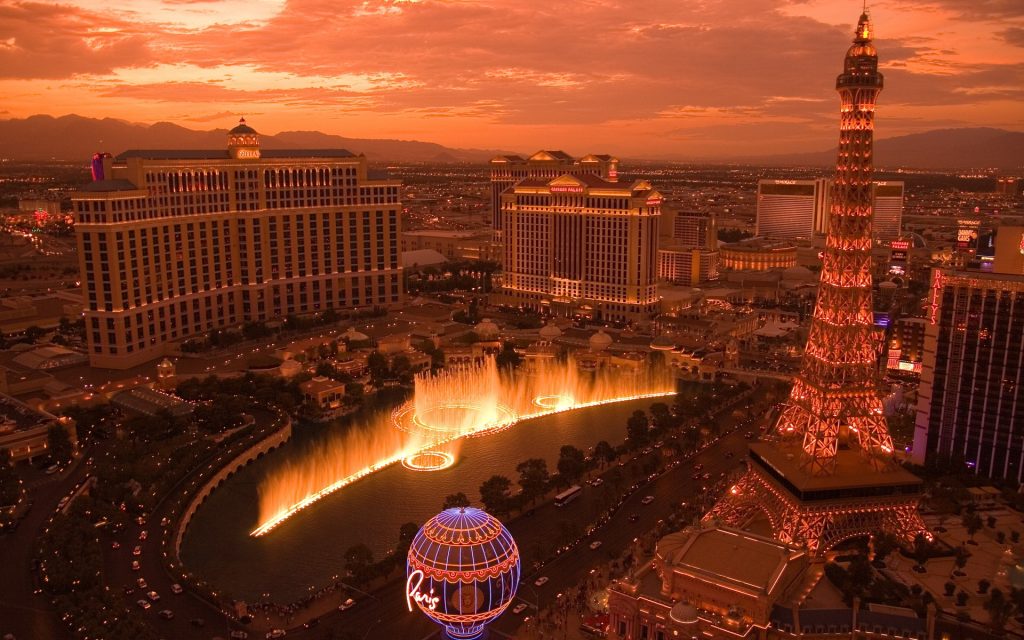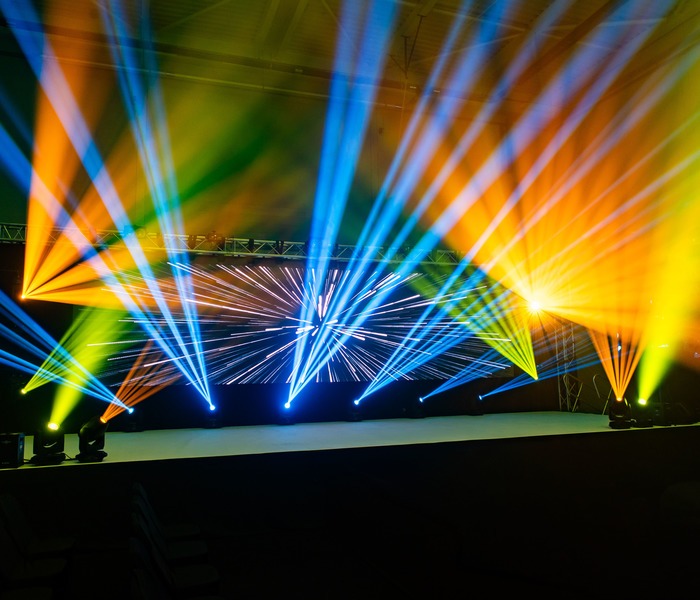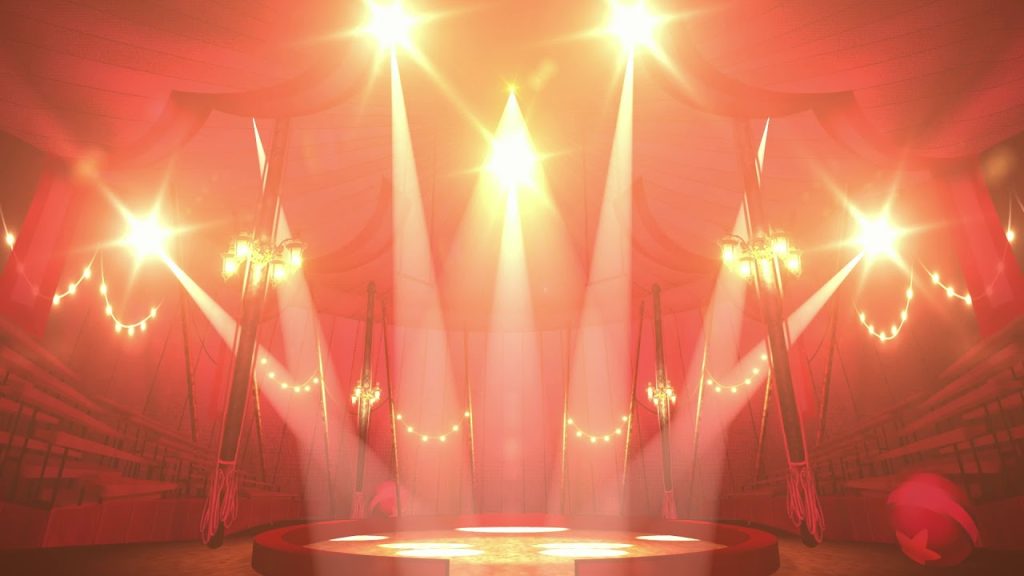Importance of Stage Lighting
The integration of stage and lighting is a pivotal aspect of any live performance. It transcends mere illumination, becoming a powerful tool that profoundly influences the audience’s experience. Stage lighting serves multiple essential functions, two of which are enhancing visibility and setting the mood—both critical in the realm of theatre and live performances.
Pastiche expert team has extensive experience in designing lighting systems for a diverse range of events, ensuring each setup is both effective and impactful Our bespoke solutions are perfect for transforming venues, highlighting products, lighting stage sets, or enhancing brand visibility. With our expertise, your event is guaranteed to be both unforgettable and influential.
Enhancing Visibility
Visibility is the cornerstone of stage lighting. It ensures that performers are seen clearly by the audience, thus facilitating the communication of the narrative. As noted by German director Max Reinhardt, the strategic placement of light is paramount—it should highlight the necessary areas while obscuring the rest to direct the audience’s focus appropriately.
The technical aspect of visibility involves careful consideration of luminosity levels to ensure that the performers are not just visible, but also that their expressions and movements can be understood. This clarity is essential as it affects the audience’s ability to comprehend spoken speech and, by extension, the entire performance.
For those in need of professional stage lighting solutions, exploring options for audio visual equipment hire can provide the necessary tools to achieve the desired level of visibility on stage.
Setting the Mood
Aside from making the performance visible, stage lighting is instrumental in creating an emotional landscape for the audience. It has the unique ability to evoke specific feelings and set the overall atmosphere of a scene. This mood-setting function can be likened to a painter using colours to evoke emotions; lighting designers use intensity, colour, and movement to paint the stage and influence the audience’s emotional response.
The mood or atmosphere created by the lighting can vary from the joyful brightness of a sunny day to the ominous gloom of a stormy night. However, it is crucial that the pursuit of mood does not come at the expense of visibility, which remains a primary function of stage lighting.
For productions aiming to make a significant impact, working with experienced audio visual suppliers is key. They can provide advanced lighting systems and expertise to craft the perfect mood for any scene, ensuring that the emotional tone resonates with the audience.
In conclusion, stage lighting is far more than a technical requirement; it is an artistic element that plays a central role in the storytelling process. By enhancing visibility and setting the mood, lighting designers help to create a compelling and immersive experience for the audience.

Functions of Stage Lighting
Stage lighting is a pivotal element in the production and performance industries. It does more than merely illuminating the stage; it guides the audience’s focus, contributes to the composition of each scene, and reflects the given circumstances of the performance.
Pastiche can assist in implementing these lighting strategies effectively, utilising cutting-edge technology and creative designs to enhance every aspect of your event. Our team ensures that the lighting not only serves its functional purposes but also elevates the overall atmosphere, making every performance unique and engaging.
Guiding Attention
One primary function of stage lighting is to direct the audience’s attention to where it is needed at any given moment during a performance. By adjusting intensity, colour, and focus, lighting can highlight specific actors, props, or areas of the stage, subtly cueing the audience where to look. This selective visibility ensures that key elements of the performance are not missed and can be executed with precision to enhance storytelling.
Aiding Composition
Stage lighting aids in the composition of a scene by shaping and defining the visual aspects of the space. Like a painter with a canvas, the lighting designer uses lights to create depth, texture, and contrast, bringing a three-dimensional quality to the performance. By manipulating shadows and silhouettes or focusing on particular features, lighting can alter the perception of the stage’s size and shape, thus influencing the audience’s experience of the scene.
Reflecting Given Circumstances
The lighting of a stage production reflects the given circumstances such as time of day, location, weather, and season, which are integral to the narrative. For instance, a warm, golden glow can signify a sunrise, while a cool, blue hue might indicate a night scene. These visual cues, conveyed through lighting, help to establish context and contribute to the believability of the performance. Lighting can also transition smoothly between scenes to denote passage of time or a change in location, assisting in the storytelling without the need for words.
Through its various functions, stage lighting becomes an indispensable tool for enhancing the overall impact of a performance. It is an art form that requires a delicate balance between visibility, composition, and mood, all while supporting the narrative and emotional journey of the story. For those looking to hire or learn more about the equipment behind these effects, explore options at audio visual equipment hire, audio visual suppliers, and stage theatre lighting.
Types of Stage Lighting Equipment
The selection of stage lighting equipment plays a pivotal role in the overall effect and atmosphere of any production or event. Each type of lighting equipment offers unique features and functionalities, impacting the visual experience. Below, we detail some of the primary lighting fixtures utilised in stage and lighting, which can be sourced through audio visual equipment hire and audio visual suppliers.
Pastiche can assist in selecting the right types of lighting equipment tailored to your specific needs. Our expertise in understanding the nuances of each fixture ensures that your event benefits from the optimal setup, enhancing both performance impact and audience engagement. We provide top audio visual state-of-the-art equipment that perfectly matches the creative vision and technical requirements of your event.
Ellipsoidal Spotlights
Ellipsoidal spotlights, commonly referred to as “Lekos”, are traditional stage spotlights known for their versatility and precision. They are capable of being shaped and focused to pinpoint accuracy, which is ideal for highlighting specific stage areas or performers. These spotlights can be equipped with shutters and gobos to create patterns or texture on stage, making them a staple in stage theatre lighting.
LED Pixel Tube Lights
LED Pixel Tube Lights have gained popularity for both indoor and outdoor stage environments. These lights are notable for their programmability and RGBW capabilities, providing a vast spectrum of colour options within a single tube array. The flexibility of these lights allows for dynamic and creative lighting designs, adding vibrancy and movement to any stage setting.
LED Uplights
LED Uplights are designed to project beams of light upward, transforming the look and feel of a space. These fixtures are commonly used to enhance vertical surfaces such as walls, backdrops, or natural elements like trees. The ability to select from a range of colours enables these lights to contribute significantly to the mood and ambiance of a stage performance.
Moving Head Lights
Moving Head Lights, or intelligent lights, offer a dynamic range of movement and effects. These motorised fixtures can pan, tilt, change focus, and switch between colours and patterns. Although they require more technical knowledge to operate, the visual impact they provide can be transformative for live performances, making them a valued component in modern stage lighting.
Laser Lights
Laser Lights are recognised for their intense brightness and sharp focus. Typically utilised in high-energy events such as concerts, laser lights are more decorative, contributing to the atmosphere rather than serving as the primary lighting source. They can create stunning visual effects that captivate an audience, adding to the dramatic flair of an event.
The equipment listed above represents just a fraction of the options available to enhance a stage production. By combining various types of lighting fixtures, designers can craft a visual narrative that complements the performance, whether it’s a play, concert, or corporate event. The key is to understand the unique properties and applications of each lighting type to achieve the desired outcome.

Theories of Stage Lighting
The art of illuminating a stage extends beyond mere visibility; it involves understanding and applying different theories of stage lighting to create a captivating visual experience. These theories guide lighting designers in their quest to support the narrative and enhance the overall aesthetics of a production.
Pastiche can help by applying these theories practically, ensuring that the lighting design complements the thematic elements of your event. Our team of experts will work with you to select the appropriate lighting strategies that best highlight the narrative and emotional tone of the production, enhancing both the visual appeal and the storytelling impact. This tailored approach ensures that each element of the event is not only seen but felt, contributing to a more immersive experience for all attendees.
Straight-On Viewing
Straight-on viewing refers to a lighting setup where the audience’s perspective aligns with the direction of the light. This approach minimises shadows and ensures that the actors’ expressions and movements are clearly visible. It’s commonly used in productions where clarity and direct engagement with the performers are essential, such as in monologues or solo performances.
When applying straight-on viewing, lighting designers focus on the uniformity and intensity of light to prevent any visual distractions. This technique often employs front lighting, which can be adjusted in colour and intensity to match the mood of the scene. The strategic placement of fixtures is crucial to maintain the balance between visibility and artistic intent.
Multiple Views
The concept of multiple views in stage lighting involves illuminating the stage from various angles to create depth and dimension. This technique enriches the visual landscape by highlighting different facets of the set and performers. Lighting designers divide the stage into zones, providing each with independently controllable lighting to create a dynamic environment.
By utilising a combination of sidelights, backlights, and downlights, designers can sculpt the space, enhancing the three-dimensionality of the stage. This approach is particularly effective in scenes requiring a complex interplay of light and shadow to convey the narrative’s subtleties. The table below outlines the various lighting angles used to achieve multiple views:
| Lighting Angle | Purpose |
| Front Light | Ensures visibility and reduces shadows |
| Sidelight | Highlights texture and form |
| Backlight | Creates depth and separates performers from the background |
| Downlight | Emphasises verticality and adds a dramatic effect |
Extended Views
Extended views take the concept of multiple views further by incorporating creative lighting techniques that expand the perceived space and immerse the audience in the performance. This method leverages unconventional lighting angles and positions to cast expansive patterns and textures, often transforming the entire theatre space into part of the set.
Lighting designers might use techniques like projecting gobos to create intricate patterns or employ coloured gels for atmospheric effects. The choice of colours can range from warm to cool tones, each evoking different emotional responses. Extended views are about pushing the boundaries of traditional lighting to envelop the audience in an all-encompassing visual narrative.
Understanding and applying these theories of stage lighting is crucial for audio visual suppliers and those involved in stage theatre lighting. A well-thought-out lighting design can significantly elevate a production’s impact, creating memorable experiences for the audience. For more information on choosing the right equipment for your production, consider exploring audio visual equipment hire options.
Creating Mood with Lighting
In the domain of stage theatre lighting, the capacity to create and manipulate mood is one of the most potent tools available to a lighting designer. The lighting not only illuminates the stage but also shapes the emotional landscape of a production, influencing the audience’s experience in subtle yet profound ways.
Pastiche can assist in leveraging this power effectively. Our team of seasoned professionals uses strategic lighting choices to evoke specific emotions and atmospheres tailored to the theme of your event. We collaborate closely with production teams to understand the desired mood and ensure that our lighting designs reinforce and amplify the intended emotional impact, enhancing the overall experience for every attendee.
Role of Lighting Design
Lighting design is an integral component of any performance, akin to how editing serves a film by guiding the audience’s attention, weaving atmosphere, mood, and scene transitions. The role of lighting design extends beyond mere visibility; it establishes a connection between the content on stage and the audience, contributing a narrative effect to the visual experience. Each scene may require a unique lighting approach to properly express its intended mood or thematic elements, and effective lighting design draws from a deep understanding of the emotional and psychological undertones of a production.
Lighting design involves a meticulous blend of technical skill and artistic vision, where designers must consider the script, set, and costumes, enhancing the text’s three-dimensionality and punctuating the show’s rhythm with carefully timed lighting cues.
Emotional Expression through Lighting
Mood or atmosphere is a crucial function of stage lighting, capable of evoking the desired emotional response from the audience. This aspect of lighting can sometimes be prioritised to the detriment of visibility, highlighting the need for a balanced approach. Lighting designers must employ a strategic combination of distribution, movement, texture, colour, direction, and intensity to shape the mood and atmosphere of a play.
For example, warm colours can evoke feelings of comfort and intimacy, while cool colours might create a sense of detachment or foreboding. The interplay of light and shadow can suggest mystery or danger, and the use of stark or subtle lighting transitions can indicate changes in time or emotional shifts within the narrative.
When seeking audio visual equipment hire or consulting with audio visual suppliers, it is essential for clients to understand the impact that different lighting equipment and design choices will have on the mood and emotional expression of their event or production. The right lighting design can transform a stage into a canvas where stories come to life, emotions are felt deeply, and memorable experiences are etched into the minds of the audience.

Technology in Stage Lighting
The technological revolution has reshaped the world of stage and lighting, bringing about significant advancements that enhance both the practical and artistic elements of theatrical productions.
Pastiche stays at the forefront of these innovations by continuously updating our equipment and training our team on the latest developments in lighting technology. This commitment allows us to offer state-of-the-art solutions that can be seamlessly integrated into any event, ensuring that our clients benefit from the most cutting-edge lighting designs. By adopting the newest technologies, we not only improve the visual appeal of productions but also increase efficiency, allowing for more complex and creative lighting setups that truly captivate audiences.
Evolution of Lighting Technology
The evolution of lighting technology has been a key driver in transforming the theatrical experience. From the early reliance on natural light and open flames, the introduction of limelight in the 19th century marked the first major leap in stage lighting innovation. By directing light through lenses and reflectors, limelight allowed for greater control and safety.
Advancements continued into the 20th century with the transition to electrical lighting, paving the way for the sophisticated systems used today. Modern lighting systems are often managed via digital light boards capable of controlling an extensive array of lights, which can be intricately programmed for precision and effect.
| Era | Lighting Source | Impact |
| Pre-19th Century | Natural Light, Fire | Limited control, High risk |
| 19th Century | Limelight | Improved direction and safety |
| 20th Century | Electrical Lighting | Enhanced control and versatility |
| 21st Century | Digital Systems, LED | Precision, energy efficiency |
Impact of LED Lights
LED (Light Emitting Diode) lights have had a profound impact on stage lighting capabilities. With the development of LEDs that offer a spectrum of seven colours, lighting designers now have an expansive palette to craft with. This technology allows for instantaneous colour changes, eliminating the need for mechanical filters or gels. LED lights also feature built-in dimmers, which can be manipulated remotely, offering a seamless transition between hues and intensities. These innovations have rendered LED lighting a mainstay in stage theatre lighting.
Safety Considerations
With the introduction of advanced lighting technologies, safety considerations have become paramount. LED lights, while cooler and more energy-efficient, still require careful installation and management to prevent electrical hazards. It is essential for audio visual suppliers and audio visual equipment hire companies to ensure that all stage lighting equipment meets industry safety standards and that staff are trained in proper setup and operation.
It’s also important for theatres to maintain regular inspections and updates of their electrical systems to support the increased demands of modern lighting. Adhering to safety protocols not only protects performers and crew but also ensures that the audience can enjoy the show without any risk of interruption due to technical failures.
By embracing the latest advancements in stage lighting technology while prioritising safety, Pastiche can help you create visually stunning performances that captivate audiences and elevate the art of storytelling.